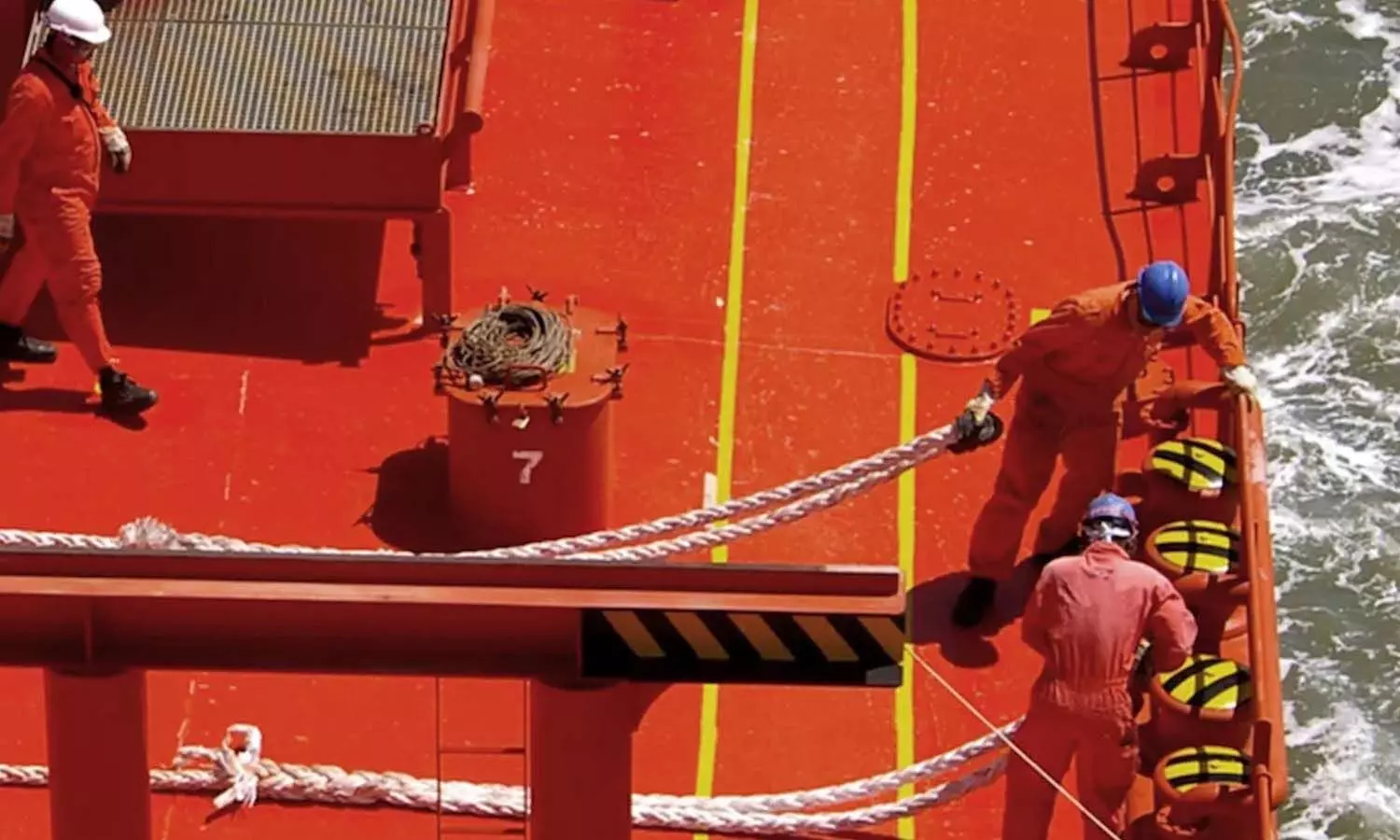
Rising tide of container losses puts the Indian coastline at risk
Rising maritime risks test India’s ports as ageing ships and shifting routes expose cracks in coastal safety.

As global shipping routes shift and an ageing fleet keeps sailing, the cracks in maritime safety are beginning to show — and India is feeling the impact. From increased container losses to machinery breakdowns and fires at sea, the risks aren’t staying offshore. Recent incidents along India’s coast echo a global pattern, raising urgent questions: Is our maritime infrastructure ready, or are we bracing for a wave of preventable disasters?
Global ripples, local shocks
The recently released World Shipping Council’s “Containers Lost at Sea 2025” report offers a sobering view of the situation. Globally, 576 containers were lost in 2024 — a sharp rise from the record-low 221 in 2023, although still well below the 10-year average of 1,274. A key reason? The drastic shift in shipping routes caused by Red Sea disruptions leading to a 191% increase in transits around the Cape of Good Hope, one of the world’s roughest maritime corridors. Nearly 200 containers were lost in that region alone.
This re-routing has had an unintended domino effect: vessels diverted from their usual paths are now crowding alternative trade corridors, including those brushing along India’s western coast. Increased congestion, combined with monsoon turbulence and insufficient infrastructure readiness, is amplifying the likelihood of accidents.
“Even one container lost is one too many,” says Joe Kramek, President & CEO of the World Shipping Council. His words ring louder in the Indian context, where a fragile balance of old fleets, newer risks, and legacy port systems is increasingly under strain.
A crisis is ageing into view
But containers lost at sea are only one facet of a deeper crisis. According to Lloyd’s List Intelligence, maritime casualties rose by 15% in 2024, building on a 7% increase in 2023. This isn’t a statistical fluke; it’s a trend six years in the making. Since 2018, global casualties have risen by 42%, while the number of ships has increased by just 10%.
The core issue? The ageing global fleet. Over 44% of ships in operation are now 25 years or older, and they are failing. In 2024, machinery failures accounted for 60% of all maritime incidents. Not surprisingly, 80% of incident growth came from vessels over 25 years old, with 45% of machinery failures directly linked to these older ships.
India, whose ports continue to serve as major transit and repair hubs for such vessels, is directly in the line of fire. Recent Indian Coast Guard reports show a disturbing rise in near-shore engine breakdowns, rudder losses, and emergency towage requests, many of which can be traced to foreign-flagged vessels well past their prime, rerouted toward Indian waters due to global disruptions.
The Indian coastline: Caught in the crossfire
India’s position at the heart of east-west maritime trade makes it a natural rerouting hub. But in 2025, that strategic advantage has come with increasing risk. As global shipping avoids the Red Sea and pushes more traffic around the Cape and toward Indian waters, a worrying number of maritime incidents are unfolding along India’s coastline, particularly off Kerala.
In January 2025, a foreign-flagged container vessel lost propulsion during heavy swells off the Kochi coast, forcing tug deployment and partial cargo offload. In March, a barge operating near Alappuzha capsized after suffering mechanical failure during cargo transfer, and a crew member went missing. In May, a fire broke out aboard a bulk carrier anchored off Beypore due to overheating in the engine room. Local fire services managed to contain the blaze, but the hull sustained structural damage.
These are not isolated incidents; they're part of a broader systemic problem. The Lloyd’s List Intelligence 2025 casualty data shows machinery failures accounted for 60% of all global incidents in the past year, with fire and explosion cases rising 18%. Vessels over 25 years old were responsible for 80% of that incident growth. Segments like RoRo, PCTC, and ferries, active along India’s coastlines, saw machinery failures spike by as much as 87%.
As these older, rerouted vessels press into Indian waters, particularly Kerala’s congested ports and monsoon-prone coastline, the cracks in maritime safety are beginning to show, and they’re no longer out at sea. They’re happening on our doorstep.
Containers, fires, and dangerous goods
Another ticking time bomb is the misdeclaration of dangerous cargo, often stowed in containers without adequate screening, an issue now being addressed globally through the WSC Cargo Safety Program, launching this year. The program introduces industry-wide cargo screening to flag undeclared or hazardous goods, a leading cause of shipboard fires.
In India, where transshipment volumes are growing at ports like Mundra, Vizaga and Vizhinjam, enforcement around cargo declarations remains patchy. And while ports are digitizing rapidly, fire safety and hazmat handling protocols haven’t kept pace, especially for older vessels retrofitted with minimal compliance upgrades.
What needs to change
The answer is not simply replacing the global fleet overnight. But the industry needs clear, proactive intervention on several fronts, and India cannot afford to be reactive.
1. Mandate Deeper Vetting for Aged Vessels at Indian Ports.
Ports should require enhanced documentation, recent inspection reports, and operational audits for vessels over 20 years old, especially if flagged from lower-tier registries.
2. Fast-Track IMO Fire Safety Training in Indian Maritime Academies.
With fire and explosion incidents rising, India’s maritime education system must urgently update curricula, prioritize firefighting drills, and mandate recurring onboard safety training.
3. Collaborate on the WSC Cargo Safety Program Implementation.
India should integrate with global cargo screening protocols and support real-time cargo declaration audits to catch dangerous goods before they become dangerous headlines.
4. Improve Coastal Rescue Infrastructure.
More investment in modern tugboats, drone surveillance, and emergency response stations along the eastern and western seaboards will help mitigate casualties when older ships inevitably fail.
Mis-declared dangerous goods remain a leading cause of shipboard incidents", says WSC President & CEO Joe Kramek.
"It is important that dangerous goods are properly declared and packed correctly so they can be handled and stored appropriately on the ship. Ocean carriers take their safety responsibility seriously – ultimately, they’ve got the crews and the vessels out there. Shipper's declaration of dangerous goods is critical as ocean carriers receive a sealed box."
"We've seen too many catastrophic incidents with mis-declared dangerous goods, and it must stop. It is important everyone in the supply chain takes their role seriously to avoid incidents. World Shipping Council is taking further proactive steps to ensure safety, including developing the Cargo Safety Program – a digital tool that flags high-risk shipments before loading, supporting safer transport worldwide. This is expected to be functional later in 2025."
"We also continue to advocate for clear regulatory guidance on safe cargo handling and are contributing to the ongoing revision of the CTU Code. We also support the full implementation of IMO Resolution A.1184(33) on places of refuge, which is critical in emergency response."
"Safety is a shared responsibility, and we remain focused on advancing practical, collaborative solutions across the global supply chain," Joe Kramek concluded.
Hope on the horizon
Despite the troubling numbers, there are glimmers of hope. New IMO SOLAS amendments, coming into effect in 2026, will make the reporting of container losses mandatory, a step the World Shipping Council has long supported. Additionally, the Top Tier Joint Industry Project, set to conclude its findings this September, is expected to recommend enhanced safety regulations for older ships and standardized stowage tools.
Meanwhile, India’s leadership in G20 maritime initiatives and its expanding global port footprint offer leverage. But to protect its own coastline and its people, India must view maritime safety not as an international obligation but as a domestic priority.
A wake-up call on water
The rising tide of container losses, mechanical breakdowns, and fires isn’t just a problem out at sea. It’s docking closer to Indian shores with every diverted ship and ageing hull. The world is already adapting. India must do the same, before the next incident becomes a headline too big to ignore.
As the global shipping industry sails through uncertain waters, the Indian coastline must evolve from a passive transit zone to a proactive maritime safety frontier.
Because in the end, a crisis out at sea always makes landfall.

